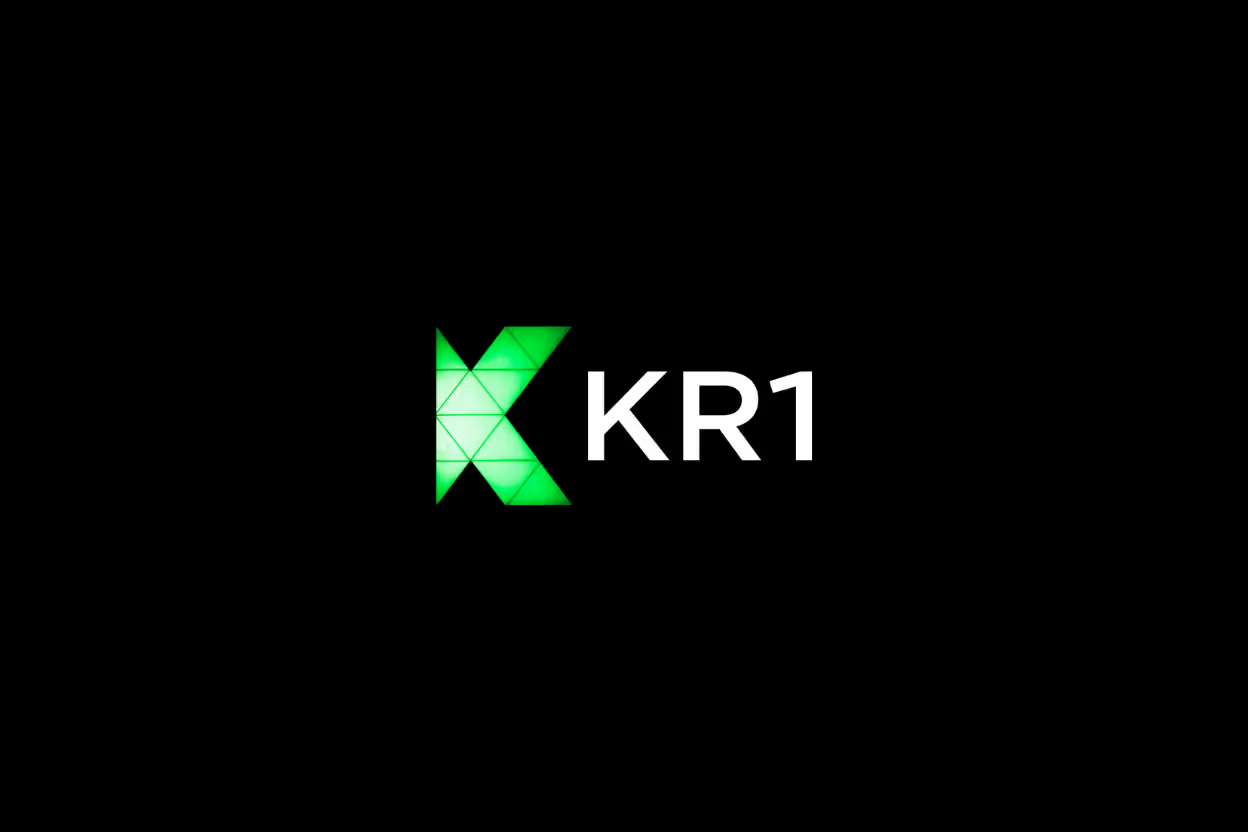Structuring a Web3 pre-seed round is different from traditional startup funding. Web3 startups often start with grants from blockchain ecosystems or public programs, which help develop prototypes without giving up equity. Many founders tap into community-driven funds like decentralized autonomous organizations (DAOs), where investors pool resources and decide together.
This decentralized and token-based approach reshapes how early funding happens. Founders and VCs need to understand these unique features to build a round that matches the Web3 environment. This guide will clarify those differences, helping you set up a pre-seed round that ensures early support while preparing for future growth.
Understanding the Web3 Pre-Seed Round
Before jumping into how to structure a Web3 pre-seed round, it’s important to understand what sets this stage apart from traditional startup funding. Web3 projects bring unique challenges and opportunities to the table that affect funding strategy. Getting clear on these differences will help you approach investors, design your tokenomics, and meet the expectations of the community backing your project.
What differentiates Web3 pre-seed from traditional pre-seed funding
Web3 pre-seed rounds are shaped by some distinct factors:
- Tokenomics Complexity: Unlike traditional equity-based startups, Web3 startups often create tokens that represent utility, governance, or economic incentives. Designing tokenomics is both an opportunity and a hurdle. You must balance incentives for early users and investors while planning for long-term value and avoiding token inflation.
- Regulatory Uncertainty: The legal landscape around tokens remains unpredictable worldwide. Regulations differ by jurisdiction and can change quickly. This makes compliance a moving target and introduces risk both for founders and investors.
- Community Involvement: Early supporters in Web3 projects are often also users or contributors who expect transparency, active governance participation, and sometimes direct control over protocol changes. This involvement influences funding approaches and the expectations placed on founders.
- Proof of Concept Beyond Product: Many Web3 projects grapple with proving their utility through community engagement or network effects rather than just a minimum viable product (MVP). This difference means milestones and validation steps can vary widely compared to traditional startups.
These factors mean that Web3 pre-seed rounds mix financial investment with community-building and token distribution considerations. Founders should treat early funding as a way to build trust as much as capital.
Typical funding sources and amounts
Web3 founders can raise pre-seed capital from several sources, each with its pros and cons:
- Friends and Family: A common route to gather initial funds quickly, usually with smaller checks and less formal agreements.
- Angel Investors: Individual investors interested in blockchain technology can provide capital and sometimes strategic advice.
- Grants: Many blockchain ecosystems run grant programs (e.g., Ethereum Foundation, Solana, Avalanche) offering non-dilutive funding, typically ranging from $10,000 to $500,000.
- Incubators and Accelerators: Programs like Outlier Ventures or Alliance DAO combine mentorship with funding, often exchanging equity or tokens for support.
- DAOs (Decentralized Autonomous Organizations): Community-led investment groups that pool resources and vote on funding proposals. DAOs are unique to Web3 and provide an alternative route to traditional venture capital.
- Ecosystem Funds: Venture arms of blockchain projects or foundations that invest early to help projects grow within their ecosystem.
In 2024 and 2025, typical pre-seed rounds in Web3 range from $100,000 to $2.5 million on average, reflecting growing investor appetite but also higher capital needs for protocol development and community onboarding.
Primary objectives for pre-seed funding in Web3
At this stage, pre-seed funding should focus on foundational work that prepares the startup for scaling:
- MVP Development: Building a functional prototype that demonstrates the project’s core value or tech innovation.
- Team Building: Hiring critical talent with experience in blockchain, cryptography, smart contracts, and product design.
- Community Validation: Engaging early users and contributors to test product-market fit, gather feedback, and create initial network effects.
- Initial Tokenomics Design: Developing and testing the token model, including distribution plans, vesting schedules, and utility mechanisms that align incentives across stakeholders.
This mix of technical progress and community growth sets the stage for future funding rounds and broader adoption. Founders must keep clear milestones and show measurable momentum to convince investors and token holders.
Understanding these elements improves your ability to tailor your pre-seed round so it fits the Web3 ecosystem’s demands. Ready to dive deeper into the nuts and bolts of structuring that round?
Key Components of Structuring the Pre-Seed Round
Structuring a Web3 pre-seed round requires careful planning that balances legal setup, token and equity distribution, valuation, and aligning incentives. Unlike traditional startups, Web3 projects often involve both equity and tokens, which introduces complexity in governance, rights, and compliance. These early choices set the foundation for future fundraising and community building, so it’s critical to get the framework right from the start. Below, we break down the core elements to consider when structuring your Web3 pre-seed round.
Legal structuring and documentation
Choosing the right legal entity is the starting point. Many Web3 founders form a Development Laboratory or an LLC that holds the intellectual property and acts as the official entity raising capital. This entity structure needs flexibility to issue both traditional equity and token-related instruments.
Common investment instruments at this stage include:
- SAFEs (Simple Agreements for Future Equity): Popular for early rounds because they are straightforward, convertible, and keep costs down.
- SAFTs (Simple Agreements for Future Tokens): Used specifically to promise future delivery of tokens, aligning investor and project incentives before the token launches.
Founders should also consider token side letters, which reserve specific token rights or allocations for certain investors outside standard equity instruments.
Regulatory compliance is a tough puzzle in Web3. Jurisdictions vary widely on how they classify tokens—securities or utilities—and the landscape keeps shifting. Keeping legal documents flexible and working with blockchain-savvy counsel helps manage this uncertainty. It's essential to build guardrails for investor protection and meet AML/KYC rules when necessary, even if your project is in early development.
Equity vs. Token Allocation
How do you divide ownership between equity shares and token allocations? This balance shapes control, upside, and governance power.
- Equity shares typically represent ownership in the legal entity and control over company decisions.
- Tokens often represent protocol participation rights, future governance votes, or utility within the network.
At the pre-seed stage, many projects allocate a fixed percentage of equity to early investors and founders, while also setting aside an allocation of tokens that will unlock over time.
Token rights usually have vesting schedules, ensuring founders and early contributors stay motivated and aligned long term. These vesting rules can govern when tokens unlock and under what conditions (time-based, milestone-based, or event-triggered).
The key is clarity and alignment: whom do you want to incentivize and retain? How much control goes with each token? Clear documentation here avoids confusion as your network grows.
Valuation and dilution considerations
Valuing a Web3 project at pre-seed can feel like aiming at a moving target. Without strong revenues or profits, valuation depends on:
- Team experience
- Strength of the technology or protocol
- Initial traction or community engagement
- Tokenomics potential and market opportunity
Dilution happens whenever you issue new shares or tokens. Understand how future rounds, token unlocks, and community distributions will affect your initial ownership.
Some typical dilution scenarios include:
- Early convertible notes or SAFEs converting at a discount, diluting founders.
- Token unlock schedules adding dilution over time as tokens enter circulation.
- Additional funding rounds issuing new equity or tokens.
Negotiating favorable terms means setting caps or discounts that fairly reward early risk without overgiving away the company or token value. Will you set a valuation cap on your SAFE? How will token price be determined for investors converting SAFTs? These questions matter.
Investor incentives and alignment
It’s not just about raising money; it’s about creating shared motivation between founders and investors.
Token utility is a powerful incentive. Investors who get tokens with clear use cases—staking, governance, or fee benefits—are more likely to engage and support your project beyond just financial returns.
Governance rights in tokens or equity also matter. Some investors want voting power on strategic decisions or protocol parameters. Designing governance tokens or equity classes to enable this without fragmenting control is vital.
Long-term incentives often include vesting schedules, performance milestones, or token lockups to ensure investors hold through initial volatility and contribute to growth.
In short, well-structured rounds balance immediate funding needs with longer-term community and investor commitment. Incentives should encourage collaboration, align goals, and signal confidence in the project's future.
Getting these components right sets your pre-seed round on a path that supports capital needs, compliance, and a healthy token ecosystem. This foundation makes it possible to navigate the complexities of Web3 fundraising confidently.
Legal and Regulatory Best Practices
When structuring a Web3 pre-seed round, following sound legal and regulatory practices is key to avoiding costly pitfalls. This involves understanding how securities laws apply, drafting agreements that protect everyone involved, and making sure your fundraising complies with anti-money laundering (AML) and know-your-customer (KYC) rules. These steps help build trust with investors and position your project for long-term success.
Understanding securities laws and their impact on token sales
Token offerings in Web3 don’t operate in a legal vacuum. In the U.S., most token sales are evaluated through the lens of securities laws, especially the Howey Test, which determines whether a token is a security based on factors like investment of money, expectation of profits, and reliance on the team's efforts. If a token is classified as a security, it triggers registration requirements or exemptions under the Securities Act.
Internationally, rules vary widely:
- In the European Union, tokens might be regulated as transferable securities under MiFID II if they resemble traditional financial instruments.
- In Asia-Pacific countries like Singapore or Australia, definitions often depend on whether tokens represent investment contracts or rights.
- Some jurisdictions are friendlier, offering regulatory sandboxes or clear frameworks, while others impose restrictions or outright bans on public token sales.
Many Web3 founders ask: Can I sell tokens publicly in the U.S. during pre-seed? The safest bet is typically to avoid public sales of tokens classified as securities without registration or exemption, relying instead on private placements with accredited investors.
Understanding these rules early helps you pick the right structure—whether a SAFE, SAFT, or other instrument—and avoid future legal consequences.
Drafting agreements for investor protection and clarity
Legal documentation is the backbone of a transparent pre-seed round. Clear agreements protect both founders and investors by spelling out rights, obligations, and outcomes. Important documents and clauses include:
- SAFEs and SAFTs: SAFEs promise future equity, while SAFTs promise future tokens once launched. Choosing the right instrument depends on your token’s regulatory status and fundraising goals.
- Token side letters: These specify particular investor rights or reserved token allocations outside standard documents.
- Vesting terms: To keep founders and early contributors aligned, tokens and equity generally come with vesting schedules and cliffs.
- Investor protections: Clauses like anti-dilution, information rights, and exit preferences provide investors with reassurance about their stake.
Drafting these documents with experienced counsel who understands blockchain nuances is non-negotiable. An agreement that is vague or incomplete can lead to disputes, regulatory scrutiny, or lost trust down the line.
Ensuring compliance with AML/KYC and other standards
Anti-money laundering and know-your-customer compliance have become essential even in decentralized environments. Regulators expect projects to conduct investor due diligence to curb fraud and illegal activities.
Key steps include:
- Verifying investor identities: Collect and confirm data like government IDs and proof of residence, especially for larger investments.
- Transaction monitoring: Track funds to detect suspicious patterns or connections with sanctioned entities.
- Using RegTech tools: Platforms like Chainalysis, Sanction Scanner, or TRM Labs help automate compliance processes without excessive friction.
- Decentralized identity solutions: Emerging technologies allow users to maintain control over their data while still enabling compliance checks.
Ignoring AML/KYC can result in hefty fines, frozen assets, or damage to reputation. Founders often wonder: Is KYC required in a Web3 pre-seed? If you raise from accredited investors or across borders, yes. Even if your round is private, investing in compliance upfront saves serious trouble later.
These legal and regulatory best practices build a solid foundation that balances innovation with accountability, positioning your fundraising for smooth growth and future rounds.
Effective Strategies to Attract and Secure Pre-Seed Investors
Securing pre-seed investors in Web3 requires more than just a pitch deck—it demands clear proof of potential, a relatable founder vision, and an engaged community behind the project. Early investors look for signals that show your idea isn’t just theoretical but progressing toward real impact. They want to feel confident in your ability to execute and in the ecosystem you’re building. Here’s how you can present your project and team to stand out in this competitive environment.
Demonstrating traction and technical viability
Early momentum can make or break investor interest. To convince investors that your project is moving beyond an idea, showcase tangible progress. Common signals include:
- A working MVP (Minimum Viable Product): Even a basic prototype that demonstrates core functionality proves that your team can build and execute.
- Active waitlists or user signups: These indicate market interest and potential demand.
- Partnerships or pilot programs: Collaborations with projects, platforms, or key ecosystem players validate your use case and relevance.
- Early developer activity: Open-source commits, tests, or integrations show ongoing progress and transparency.
- Clear technical roadmap: Highlight what’s done and what’s next, so investors can see your milestones and timelines.
Investors want to feel the pulse of the project’s progress. Rather than overloading with vague promises, focus on measurable signals that prove you can deliver technology that users or partners want.
Crafting a compelling founder story and vision
In Web3, where trust and transparency are core, investors bet on the team behind the project as much as the project itself. Your founder story should show why you are uniquely suited to solve this problem and how your vision fits the future of decentralized technology.
- Be authentic: Share your personal connection to the space, your background in blockchain or related tech, and what drives you.
- Explain the vision in simple terms: Investors look for clear, bold ideas without buzzwords. What problem are you solving and why now?
- Show your mindset: Highlight openness, community focus, and willingness to adapt—qualities Web3 investors value highly.
- Express long-term commitment: Web3 is a marathon, not a sprint. Demonstrate that you plan to build and grow alongside the ecosystem.
- Link to market dynamics: Align your vision with growing trends like DeFi, NFTs, or DAO governance to resonate with investor interest.
A compelling founder story connects emotionally and builds trust, which is crucial when many Web3 projects face skepticism due to hype or past failures.
Building community and network effects
In Web3, your community isn’t just your user base—it’s your strongest asset and often your best advocate to investors. Projects that nurture active, engaged communities can generate momentum that attracts funding.
- Start early: Engage users, contributors, and partners from day one.
- Create channels for participation: Discord, Telegram, forums, or governance platforms help build a two-way dialogue.
- Encourage contributions: Invite community input on features, tokenomics, or governance decisions.
- Reward engagement: Use tokens or other incentives to foster loyalty and participation.
- Show organic growth: Investors want to see a thriving network effect, not just marketing campaigns.
Think of your community as a force multiplier. Its enthusiasm and buy-in demonstrate social proof, reduce customer acquisition costs, and create a stronger foundation for scaling.
Choosing the right investor mix
Choosing investors is as important as raising the funds. A well-balanced group offers capital, credibility, and strategic value that supports your long-term goals.
- Angel investors: Bring early checks and valuable advice, especially if they have Web3 experience.
- Strategic investors: Companies or funds with ecosystem ties can open doors to partnerships, integrations, or user bases.
- Ecosystem funds: Venture arms of blockchain projects often provide grants or capital to projects that grow their platform.
- DAOs: Decentralized organizations offer funding with community participation but require transparency and ongoing engagement.
Balancing these types helps you avoid over-reliance on any single source and builds a supportive investor base that can contribute beyond money. Consider what each investor will bring to your project in terms of network, expertise, and alignment with your vision.
By blending these strategies—showing traction, telling your story, growing your community, and picking the right investors—you increase your chances of attracting strong pre-seed backing that sets your Web3 project on the right path.
Conclusion
A well-structured Web3 pre-seed round depends on solid legal, financial, and strategic groundwork. Founders must focus on clear entity formation, compliant investment instruments, and detailed tokenomics to balance equity and token distribution effectively. Understanding evolving regulations and aligning investor incentives with community engagement help build trust and reduce risks.
Approaching the pre-seed round with careful planning and transparent communication prepares your project for future growth and fundraising. Keep the big picture in mind: early funding in Web3 is not just about capital but creating a foundation that supports innovation, governance, and long-term value. How will your early structure set the stage for building a resilient and scalable protocol?
Thank you for exploring this guide. Sharing your experiences or questions about structuring Web3 pre-seed rounds can help the community grow stronger together.

![How to Structure a Web3 Pre-Seed Round [Guide for Founders and VCs]](https://cdn.prod.website-files.com/687e5ba1e7fce8bb8ee14664/688f4d91d051bc5b614964da_b0d36d2c-1ccb-41cc-a232-fa23a94ba44a.avif)







